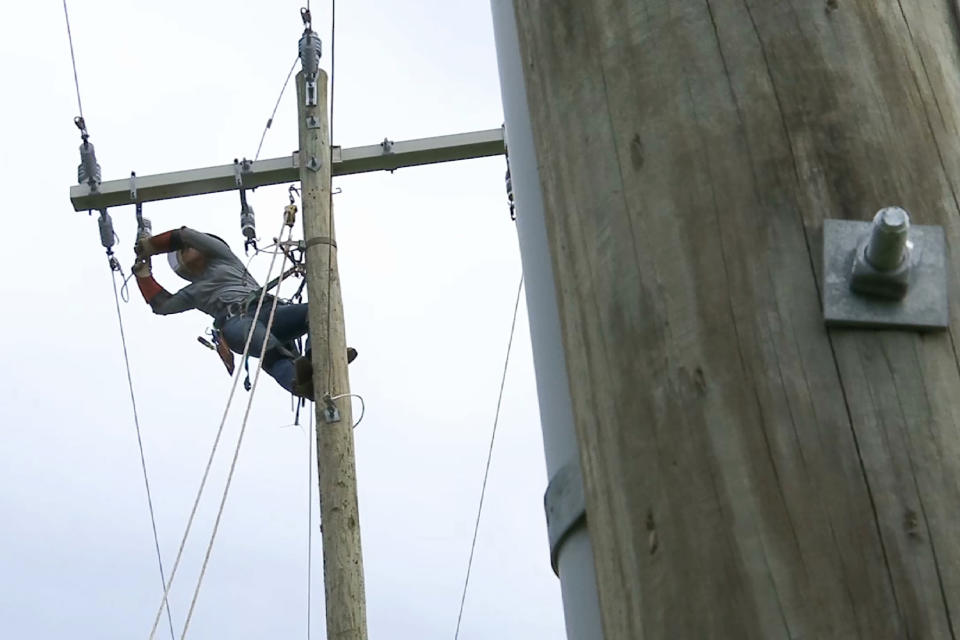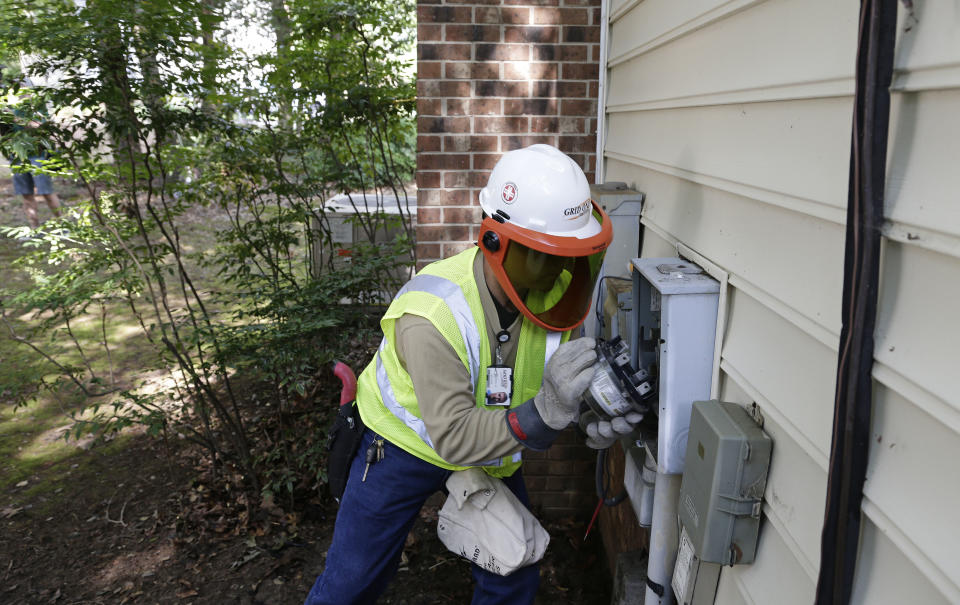Providing free gas and electricity during coronavirus comes with hefty price tag for Duke Energy
As tough as it’s been for millions of Americans to shelter in place because of the coronavirus pandemic, staying at home with no gas or electricity would have been worse.
Utility companies throughout the country have been doing their part to keep the lights on regardless of customers’ ability to pay.
Duke Energy (DUK), the utility giant providing gas and electricity to about 24 million people across the Carolinas, Midwest, and Florida, has stayed open during the pandemic; 60% of employees have been working from home, while 40% have remained on the front lines.
“These [front line workers] are employees in power plants, our line and service techs, our nuclear professionals,” Duke Energy CEO Lynn Good told Yahoo Finance, “And the focus there has been on safety, personal protective equipment, social distancing.”
“We’ve also supported employees with more paid time off. We’ve supported stipends for dependent care and other things, really to create an environment where employees feel like they can keep delivering this important service,” she said.

Duke Energy, based in Charlotte, N.C. with about 29,000 employees, has begun the process of returning employees working from home back to the office. Good says a modest number will return in June and a few more in July as the company monitors work protocols over a several month period.
Providing free gas and electricity comes with hefty price tag
Duke Energy would usually start the disconnecting process after 60 days if a customer hadn’t paid their gas or electricity bills. But during the coronavirus pandemic, the company has waived disconnects and fees.
There are currently more than 100,000 customers who are 60 days or more behind on their bills, putting pressure on the company’s bottom line.
“Electricity has been on throughout this entire pandemic. And people have been counting on it,” said Good. “But we have been affected, not only by industries that are closed, and restaurants and universities, but also by customers who have struggled,” she said.
Duke Energy is in active conversations with regulators in the numerous states in which it operates about when and how it will be able to recoup those costs. “[Regulators] understand that we’re leaning on the financial health of the utility right now. And finding that balance between the financial health and programs for customers is part of the assignment every day,” said Good.
In an effort to accommodate individuals, the utility giant is offering flexible payment arrangements and highlighting programs available in different communities that might help cover struggling customers’ bills. Other major utility companies such as PG&E, ConEd, FirstEnergy and Comcast are also offering financial relief to customers.
Duke Energy undergoing $350-$450 million in cost cuts
The coronavirus pandemic has led to a 5% reduction in the volume of electricity Duke Energy sold in April. “Over the balance of the year, probably 3% to 5% is what we should expect. And so our assignment is to match that reduction in cash flow and revenue with a reduction in expenses,” said Good.

Duke is in the midst of cutting $350 million to $450 million in expenses to mitigate the effects of the pandemic. “We’ve put a hiring freeze in place. We’re watching our discretionary expenses. And we’re doing all of this to save costs so we can save jobs. We have not had any voluntary or involuntary layoffs, and really would like to maintain that posture as long as we can,” said Good.
In spite of the effects of the pandemic, Duke Energy is moving forward with its 5-year, $56 billion capital plan to deliver cleaner energy to customers. “That investment objective is really to position our company for the transformation that’s going on in electricity,” said Good. In the first quarter, Duke Energy reported net income of $899 million on revenue totaling $5.9 billion. The stock is down 7.7% year to date.
Duke Energy aims to have net zero carbon emissions by 2050. “We’re going to double renewables by 2025. We’re going to add battery storage. We’re going to retire coal plants, add some natural gas, keep our nuclear plants running, and then invest in a delivery system that’ll make all of that possible, as well as maintain resiliency and reliability,” said Good.
More from Sibile:
Restaurant owners ask Trump for PPP fixes. Trump response: ‘My news negates what you just said’
How coronavirus on your cash is payment game changer
Here’s how coronavirus will change our flying habits
The case for monthly coronavirus stimulus checks: Americans ‘need consistent liquidity’
Find live stock market quotes and the latest business and finance news
